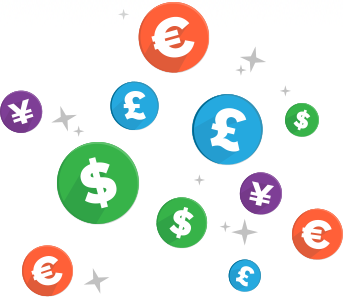After the USD and Euro, the Japanese Yen is the 3rd most traded currency in the foreign exchange market. It is the official currency of Japan and is used as a reserve currency ranked at number four. The Yen was officially adopted by the Meiji government with the ?New Currency Act? of 1871. The subdivision of this Japan currency is in to 100 sen or 1000 rin. The issuance and circulation rights of the Yen lie under the authority of the Bank of Japan. The Japanese Yen might be the only currency that can float and it costs more to make one yen coin than it is actually worth. The weight of a Yen coin is equivalent to a gram.
Some facts that you ought to know about the Japanese yen:
- The short name for Japan currency is JPY.
- ¥ is the symbol of the Yen.
- The most used Yen coins are 1 HOU, 2 HOU, 5 HOU, HK$1, HK$2, HK$5, HK$10.
- The most frequently used banknotes are ¥1000, ¥5000, ¥10000.
- The Bank of Japan is the chief bank of this region.
History of Japanese Yen
The Japanese yen, abbreviated as JPY, is Japan?s national currency and uses the official symbol ¥. After the US dollar and Euro, it is the world?s most traded and valued currency and is frequently used as a reserve currency. The word ?yen? means a round object. Coins of 1 yen, 5 yen, 10 yen, 50 yen, 100 yen, and 500 yen, that were launched in 1871 are still in use. The latest series of banknotes were issued in the year 2004 and consist of ¥1,000, ¥2,000, ¥5,000, and ¥10,000.
Factors affecting the Japanese Yen
The Japanese economy is established on the production and export of electronic goods and automobiles. Over the years, there has been an increasing focus on hi-tech precision goods and robotics. In terms of GDP, Japan is the 3rd largest economy in the world, making the yen highly popular.
1. The Tankan Survey:
An economic report, the Tankan Survey is published by the Central Bank of Japan. The report covers numerous companies that either have a defined minimum capital amount or are highly influential. These companies are questioned about the ongoing trends of their businesses. The survey also asked them to submit their proposed business for the upcoming quarter/ year. The Tankan Survey is considered to be a key indicator that is released before the GDP data.
2. Japan?s economic status:
In the past thirty years, Japan?s economy has not experienced a lot of growth. Just like many other countries, it owes a considerable debt. With a high level of debt, traders feel more comfortable with Japan?s debt balance. Experts believe the weak yen captures the financial situation of the country. It should also be noted that Japan has one of the lowest birth rates the world over, along with a significant percentage of adults/ older adults.
3. Bank of Japan:
Ever since the country?s property bubble collapsed, BOJ has maintained low rates. Through currency intervention, the bank has been selling the yen in order to make exports all the more competitive. The country?s trade balance also affects the bank?s policies and forex rates.
4. Carry Trades:
A trading technique, Carry Trade includes borrowing in a low-interest currency to invest in a high-interest currency, to achieve a more increased rate of return. As the interest rates of the BOJ are low, the yen becomes a lucrative currency to buy currencies from other nations which pay a comparatively higher rate of interest. This further boosts investors to liquidate the yen positions in favour of other acquisitions/ assets.













